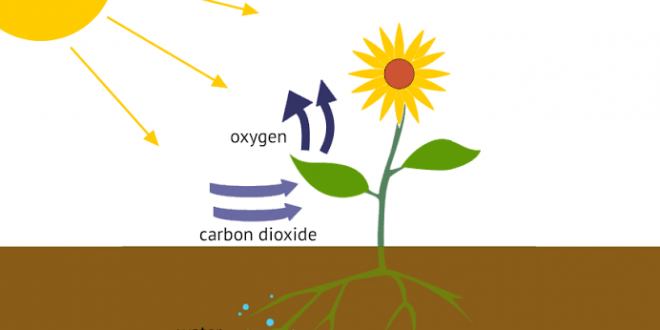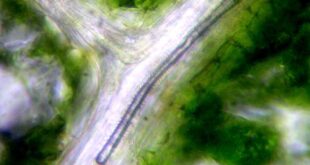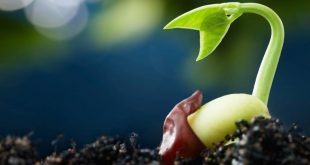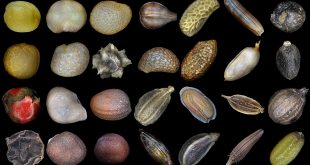Photosynthesis is a chemical reaction that takes place inside a plant, producing sugar type food for the plant to survive. Carbon dioxide, water and light are all needed for photosynthesis to take place. It happens in the leaves of a plant and the other green portions as well.
This biochemical process is affected by some factors. In this article, the function of these factors are discussed.
Related Article
- Photosynthesis: Introduction & Requirements.
- Mechanism of Photosynthesis: Light Dependent Phase.
- Mechanism of Photosynthesis: Light Independent Phase.
- Factors of Photosynthesis.
Best safe and secure cloud storage with password protection
Get Envato Elements, Prime Video, Hotstar and Netflix For Free
Best Money Earning Website 100$ Day
#1 Top ranking article submission website
Factors of Photosynthesis
External Factors
1. Carbon Dioxide
2. Light Intensity
3. Quality of Light
4. Duration of Light
5. Temperature
6. Oxygen
7. Water (Soil Water)
8. Air Pollutants
9. Minerals (Nutrient Supply)
Internal or Plant Factors (Leaf or Genetic Factors)
10. Age of leaves
11. Chlorophyll
12. Hormones
13. Leaf Anatomy
14. Accumulation of End Products
Factors of Photosynthesis
Factor # 1. Carbon Dioxide
CO2 concentration of the atmosphere is 0.036% or 360 ppm (360 µl. l-1). It is a limiting factor for C3 as the available CO2 concentration is lower than the optimum for photosynthesis. Increase in of photosynthesis in most C3 plants . A decline is observed beyond 0.1%.

When CO2 concentration is reduced, there comes a point at which illuminated plant parts stop absorbing carbon dioxide from their environment. It is known as CO2 compensation point or threshold value. At this value CO2 fixed in photosynthesis is equal to CO2 evolved in respiration and photorespiration. The value is 25-100 ppm in C3 plants and 0-10 ppm in C4 plants. The reason for low compensation value for C4 plants is the greater efficiency of CO2-fixation through PEP-carboxylase.
Factor # 2. Light Intensity
It varies with latitude, altitude, season, topography, presence or absence of light interceptors like clouds, dust, fog, humidity, etc.
As the light intensity (µ mol. m-2. s–1) increases, the rate of photosynthesis (p mol. CO2. M-2.s-1) also increases. The light intensity at which a plant can achieve maximum amount of photosynthesis is called light saturation point. Its value is 800-1000 ft. candles (10% of full sunlight) in shade plants, 50-70% of full sunlight in C3 sun plants and up to 200% of full sunlight in C4 sun plants (e.g., Sugarcane, Fig. 13.30).

Beyond saturation point (it is seldom realised in nature in C4 sun plants) the rate of photosynthesis begins to decline. The phenomenon is called solarisation.
Factor # 3. Quality of Light
The range of photo-synthetically active radiation (PAR) lies between 400 – 700 nm. Maximum photosynthesis occurs in blue-violet and red regions of the light spectrum where most of the absorption is carried out by chlorophylls. Red light favours carbohydrate accumulation while blue light stimulates protein synthesis.
Minimum photosynthesis occurs in the green wavelengths. Plants growing under the canopy of other trees receive very little red and blue-violet light because of its absorption by leaves of the canopy. They receive more of green light that is transmitted through the tree leaves. As a result the rate of photosynthesis of herbs, shrubs and other undergrowth’s in a forest is comparatively low. Ultra-violet rays are harmful.
Factor # 4. Duration of Light
Continuous photosynthesis can occur in continuous illumination without any harm to the plant though the rate of photosynthesis may slightly decline after six days.
Factor # 5. Temperature
It does not influence light reactions of photosynthesis but affects the enzyme-controlled dark reactions. The minimum temperature at which most plants start photosynthesis is 0°-5°C but it can be as low as -20°C for lichens and -35°C for some gymnosperms. The maximum temperature at which photosynthesis can occur is 55°C in some desert plants and 75°C for hot spring algae.
The optimum temperature is 10°-25°C for C3 plants and 30-45 °C for C4 plants. When temperature is increased from minimum to optimum, the rate of photosynthesis doubles for every 10°C rise in temperature. Above the optimum temperature, the rate of photosynthesis shows an initial increase for short duration but later declines. This decline with time is called time factor (Fig. 13.31).

At low temperature enzymes become inactive. C4 plants show little photosynthesis even at not so low temperature (2-10°C) because their enzyme pyruvate phosphate dikinase is particularly sensitive to it. C3 plants show different responses to lower temperatures depending upon their adaptability. At high temperature C3 plants are more affected because of increased affinity of Rubisco to oxygen.
Factor # 6. Oxygen
Small quantity of oxygen is essential for photosynthesis except in some anaerobic bacteria. C3 plants show optimum photosynthesis at low oxygen concentration. For example, Bjorkman (1968) found in beans the rate of photosynthesis at 2.5% oxygen was twice as compared to normal atmospheric concentration.
The possible reasons are-
(i) Oxygen takes part in oxidation of photosynthetic pigments, intermediates and enzymes in the presence of strong light (photo-oxidation).
(ii) Oxygen is a strong quencher of excited state of chlorophyll.
(iii) Oxygen competes with CO2 for reducing power. However, this effect is not known in C4 plants.
(iv) It converts RuBP-carboxylase to RuBP-oxygenase. At a very high oxygen content the rate of photosynthesis begins to decline in all plants. The phenomenon is called Warburg effect.
Factor # 7. Water (Soil Water)
Water supplies H+ and electrons for carbon dioxide fixation. However, less than 1% of the total water absorbed is utilized in photosynthesis. The rest is lost in transpiration.
Even a slight increase in transpiration reduces the leaf hydration that cuts down photosynthesis by causing stomatal closure and hence decreased CO2 absorption, loss of leaf turgidity, reduced absorption of solar radiations and decreased enzymatic activity.
There is reduction in leaf water potential. It reduces leaf growth and hence photosynthetic area. Thus photo- synthesis is more sensitive to dehydration than any other metabolic process.
Factor # 8. Air Pollutants
Dust and smoke particles present in the atmosphere reduce photosynthesis by reducing light penetration and forming a layer over the plants. Sulphur dioxide, nitrogen oxides, hydrogen fluorides and other air pollutants also decrease photosynthesis.
Factor # 9. Minerals (Nutrient Supply)
Nitrogen is component of chlorophyll, enzymes, electrons transport chains and various structures of photosynthetic cells. Magnesium is a component of chlorophyll.
Fe, Cu and Mn are required for synthesis of chlorophyll. Mn and Cl are linked to photolysis of water. P as phosphate is essential for ATP synthesis. Enzyme activators of photosynthesis include potassium and sulphur. Lower availability of any of these minerals reduces rate of photosynthesis.
Internal or Plant Factors (Leaf or Genetic Factors)
Factor # 10. Age
As a leaf develops, the rate of photosynthesis rises with the age till it becomes maximum at full maturity. Afterwards the rate of photosynthesis begins to decline (Fig. 13.32) as ageing or senescence brings about deactivation of enzymes and degeneration of chlorophyll.

Factor # 11. Chlorophyll
Photosynthesis does not occur in the absence of chlorophyll. Therefore, variegated leaves produce less organic food than the completely green leaves.
However, there is no proportionality between the rate of photosynthesis and amount of chlorophyll. For example, sun plants contain less chlorophyll as compared to shade plants but the rate of photosynthesis in bright light is much higher in sun plants than in shade plants.
Factor # 12. Hormones
Cytokines and gibberellins increase the rate of photosynthesis but abscisic acid reduces the same.
Factor # 13. Leaf Anatomy
Leaf anatomy influences the rate of diffusion of CO2 into the mesophyll cells, availability of light, rate of translocation of end products, etc.
The important anatomical structures influencing them are size, structure, position and frequency of stomata, thickness of epidermis and cuticle, distribution and number of vascular strands, size and distribution of intercellular spaces, etc. Kranz anatomy is specific for C4 plants. Leaves with Kranz anatomy are more efficient in photosynthesis because of the division of labour between mesophyll and bundle sheath cells.
Factor # 14. Accumulation of End Products
Slow rate of translocation causes accumulation of photosynthetic end products during afternoon. This reduces the rate of photosynthesis.
Photosynthesis and why it’s important
Photosynthesis is plants taking in water, carbon dioxide, and light to make sugar and oxygen. This is important because all living things need oxygen to survive. All producers make oxygen and sugar for the secondary consumers and then the carnivores eat animals that eat the plants. If there is not enough producers to make the sugar and oxygen that all living things need then all living things will die out. Without producers CO2 couldn’t be taken in by the plants to be turned back into oxygen that all animals need for survival. Also, without producers, herbivores wouldn’t have anything to eat and they would all die leaving carnivores without food to eat and all life forms wouldn’t be on Earth. Photosynthesis happens in the Chloroplast of the plant’s organelle, if the Chloroplast wasn’t in the plant Photosynthesis couldn’t happen. If there was no sunlight for the plant to absorb then Photosynthesis couldn’t happen. If living things didn’t breathe out CO2 then the plants would die and living things would have no way of getting oxygen. These are the reasons why Photosynthesis is important to plants and all loving things on the planet.
Reasons Why Photosynthesis Is Important:
- It is the number one source of oxygen in the atmosphere.
- It contributes to the carbon cycle between the earth, the oceans, plants and animals.
- It contributes to the symbiotic relationship between plants, humans and animals.
- It directly or indirectly affects most life on Earth.
- It serves as the primary energy process for most trees and plants.
Source:
1. Feature image: https://www.philpoteducation.com/mod/book/tool/print/index.php=?id782&chapterid=1131
 Plantlet The Blogging Platform of Department of Botany, University of Dhaka
Plantlet The Blogging Platform of Department of Botany, University of Dhaka






Thanks for sharing. I read many of your blog posts, cool, your blog is very good.
I needed an explanation on how temperature affects the rate of photosynthesis
For example: Below 4 degree centigrade water starts freezing (crystallization) and above 40 degree centigrade the protein activities stop as a result photosynthesis rate decreases.